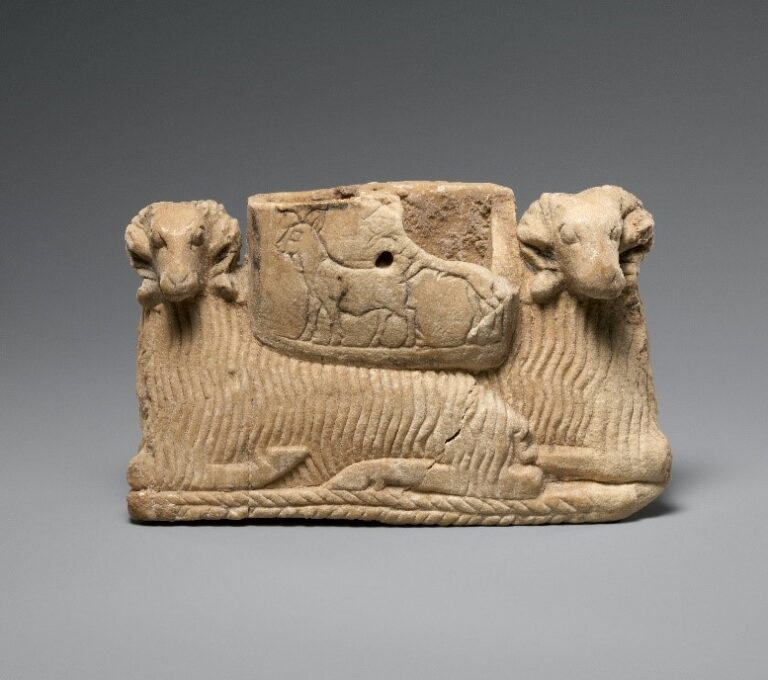Previous agreements with the Metropolitan Museum of Art in New York (Feb 2006), the Museum of Fine Arts in Boston (Sept 2006), and the J. Paul Getty Museum in Malibu (Aug 2007) all gave the accession numbers of the objects. The Princeton press release does not.
The authorities of the MFA and Getty have been particularly helpful and provided the information which has allowed a picture of the suppliers and networks to emerge (see Gill and Chippindale 2006; 2007).
Princeton and Italy seem to have made a complex deal. Some pieces will be transferred in title but remain on loan to Princeton; others will be returned to Italy; and others will remain permanently in Princeton. [Details from press release]
Princeton will keep seven objects and transfer title to eight. Of the eight objects whose ownership will transfer to Italy, half -- including the psykter and the loutrophorous -- will remain on loan to the museum for four years.I present below a list with the accession numbers (though given the vagueness of the press release it is possible that some errors will have crept in and I have indicated where there is some uncertainty).
But what are the characteristics of the eight antiquities that will be transferred to Italy? Five were acquired in 1989 (the decade with the largest number of returns for Boston, Malibu and New York), and three in the 1990s. Four are certainly Etruscan (and the fifth was initially published as Etruscan) and it is likely that they came from contexts in Tuscany. The two Apulian pieces will probably have come from contexts in South Italy. The psykter, according to Robert Hecht's Memoirs, was apparently first known in a private house in Cerveteri suggesting it probably derived from a site in the locality. Six of the items were museum purchases. Were the curatorial staff unaware of the previous histories? Will Princeton be releasing the names of the individuals, dealers or galleries who handled the pieces prior to acquisition?
1. Apulian red-figured loutrophoros, attributed to the Darius painter. Inv. y1989-29. Museum purchase, anonymous gift.Seven pieces (including a pair of Amazons) will be staying in Princeton and there is no indication as to why they formed part of the discussions and final agreement. The presence of Peter Sharrer's name is interesting. In 2002 the pediment of a second century AD funerary relief was returned from Princeton to Italy ("Ancient Art to go Home", Art in America; "Princeton Return"). This had been purchased from Sharrer in part with funds from Mr and Mrs Leon Levy. This is the piece cited in the latest press release from Princeton indicating the way it has co-operated with the Italian authorities in the past:
2. Etruscan oinochoe. Presumably inv. 1995.149. Museum purchase.
3. Apulian red-figured volute-krater, attributed to the Iliupersis painter. Inv. y1989-40. Museum purchase, anonymous gift.
4. Carian round-mouthed oinochoe, attributed to the Ivy Leaf Group. Inv. y1989-53. Museum purchase, anonymous gift. [Originally as Etruscan.]
5. Attic red-figured psykter, attributed to the Kleophrades painter. Inv. y1989-69. Museum purchase, gift of Peter Jay Sharp through the Peter Jay Sharp Foundation; Lloyd E. Cotsen; John B. Elliott; Jonathan P. Rosen, through the Jonathan Rosen Foundation.
6. Etruscan head of a winged lion. Inv. y1994-58. Museum purchase, John Maclean Magie and Gertrude Magie Fund.
7. Etruscan black-figure skyphos fragment with a sprinting youth. Inv. 1995-64. Gift of Brian T. Aitken.
8. Etruscan terracotta plaque with relief centaur. Presumably inv. 1995.129. Gift of Ali and Hicham Aboutaam.
Most recently, in 2002, the museum voluntarily returned to the Italian government an ancient Roman sculptural relief in its collection, having contacted the Italian authorities after the museum's own research revealed that the work was taken out of Italy without a legal export permit before being acquired by the museum in good faith in 1985.Those antiquities remaining in Princeton are:
9. Corinthian plate with the Ransom of Hector. Inv. y1989-25. Museum purchase, anonymous gift in memory of Isabelle K. Raubitschek and to honor Antony E. RaubitschekBut what will be the next set of antiquities to be the subject of scrutiny by the Italian authorities? The New York Times reports ("Princeton to Return Disputed Art to Italy", October 27, 2007):
10. Attic red-figured cup, attributed to the Brygos Painter. Inv. 1990-2. Museum purchase, anonymous gift in honor of J. Robert Guy.
11. Teano ware vessel in the form of a bird. Inv. y1990-76. Anonymous gift.
12. Pair of Canosan polychrome terracotta charging Amazons. Inv. 1995-110, 1995-111. Museum purchase, Carl Otto von Kienbusch Jr., Memorial Collection Fund
13. Fragment of Attic red-figured lekythos, attributed to the Pan painter. Inv. 1998-223. Gift of Mr. and Mrs. Peter Sharrer in honor of Allen Rosenbaum
14. Roman inlaid dagger and sheath (bronze, iron, silver, gold, niello), signed by Honillius. Inv. 1999-148. Museum purchase, Carl Otto von Kienbusch Jr., Memorial Collection Fund
15. Apulian guttus in the form of a drunken Silenus. Inv. 2000-145. Museum purchase, gift of an anonymous Friend.
Negotiations continue with private collectors of antiquities in the United States, as well as museums in Europe.References
Gill, David W.J., and Christopher Chippindale. 2006. From Boston to Rome: reflections on returning antiquities. International Journal of Cultural Property 13 (3):311-331. [pdf]
———. 2007. From Malibu to Rome: further developments on the return of antiquities. International Journal of Cultural Property 14 (2):205-240. [pdf]



1 comment:
See also http://www.artsjournal.com/culturegrrl/2007/10/italyprinceton_deal_reasons_fo.html.
Post a Comment